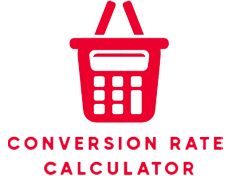Have you ever wondered how some businesses seem to turn every lead into a customer? The secret often lies in understanding and optimizing a fundamental sales metric: the sales conversion rate.
If you’re new to the world of sales and business metrics, terms like “conversion rate” can sound intimidating. But don’t worry, we’re here to demystify it all. This blog post will break down the conversion rate formula in sales in a simple, step-by-step manner, providing you with everything you need to know to calculate sales conversion rate for your own business.
What is the Sales Conversion Rate?
At its core, the sales conversion rate is a sales conversion metric that measures the percentage of leads or prospects who successfully complete a desired action—usually, making a purchase. It’s a powerful indicator of your sales team’s effectiveness and the efficiency of your sales process.
Think of it this way: if 100 people visit your website and 5 of them make a purchase, your sales conversion rate is 5%. It’s that simple!
The Sales Conversion Rate Formula Explained
So, what is sales conversion rate formula? The sales conversion percentage formula is straightforward and easy to apply.
The formula is:
Sales Conversion Rate=(Number of Leads or Prospects/Number of Conversions)×100
Let’s break down each component:
- Number of Conversions: This is the number of successful sales or desired actions. It could be the number of new customers, the number of closed deals, or even the number of people who signed up for a free trial.
- Number of Leads or Prospects: This is the total number of people who entered your sales funnel. This could be website visitors, people who responded to a marketing campaign, or a list of qualified leads your sales team contacted.
This is the sales conversion formula for beginners that you’ll use most often.
Sales Conversion Calculation: A Step-by-Step Example
To make this even clearer, let’s walk through how to calculate sales conversion rate step by step with a practical example.
Imagine you’re running a small e-commerce store. Last month, you had:
- Number of Website Visitors (Leads): 5,000
- Number of Customers (Conversions): 150
Now, let’s apply the formula:
- Divide Conversions by Leads: 150÷5,000=0.03
- Multiply by 100 to get the percentage: 0.03×100=3%
Your sales conversion rate for last month was 3%. This simple sales conversion ratio provides valuable insight into your business’s performance.
Beyond the Basic: Different Ways to Calculate Conversion
While the primary formula is a great starting point, the best way to calculate sales conversion rate often depends on what you’re trying to measure. You can apply this formula to different stages of your sales funnel.
For instance, you might want to calculate the conversion rate from:
- Website visitors to leads (e.g., email sign-ups)
- Leads to qualified prospects
- Qualified prospects to paying customers
By analyzing conversion rates at each stage, you can pinpoint exactly where your sales funnel is losing potential customers.
What is an Average Sales Conversion Rate?
A common question is, “what is an average sales conversion rate in business?” The truth is, there’s no single number. A “good” conversion rate varies significantly by industry, business model, product price point, and even the type of traffic you’re attracting.
- E-commerce: Average conversion rates typically range from 1% to 3%.
- SaaS (Software as a Service): Rates can be higher, often between 5% and 10% or more, depending on the sales cycle.
- B2B (Business-to-Business): These rates can also be high, especially if the leads are highly qualified.
The key is not to compare yourself to a generic average but to establish your own baseline and focus on continuous improvement.
How to Improve Sales Conversion Rate
Now that you know how to calculate sales conversion rate, the next logical step is to improve it. Here are a few proven strategies:
- Optimize Your Website and Landing Pages: Ensure your website is fast, mobile-friendly, and has clear calls-to-action (CTAs).
- Qualify Your Leads: Don’t waste time on leads that aren’t a good fit. Implement a lead scoring system to prioritize prospects with the highest chance of converting.
- Refine Your Sales Process: Review each step of your sales cycle. Are there any bottlenecks or unnecessary hurdles for the customer?
- Enhance Your Value Proposition: Make it crystal clear what makes your product or service unique and valuable to your target audience.
- Leverage Social Proof: Use customer testimonials, case studies, and reviews to build trust and credibility.
By focusing on these areas, you can turn more of your leads into loyal customers.
Final Thoughts
Understanding the sales conversion rate formula with example is a foundational step for any business owner, marketer, or salesperson. It’s more than just a number; it’s a powerful tool for measuring success and identifying areas for growth. Start by calculating your current rate, then use that information to make data-driven decisions that will help you boost your bottom line.


